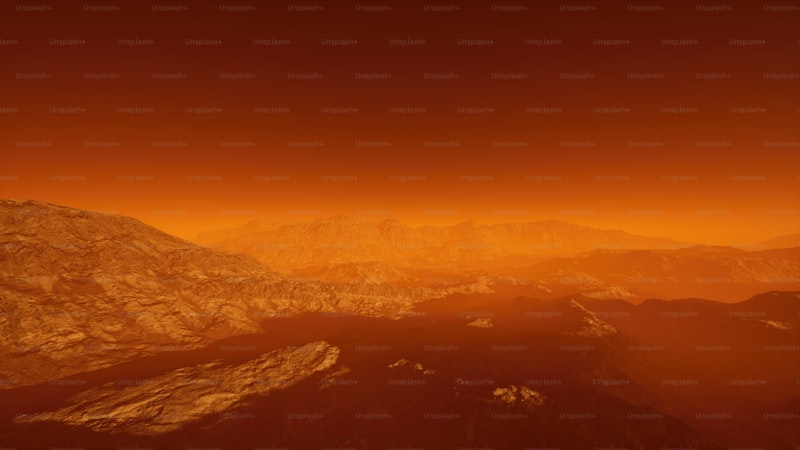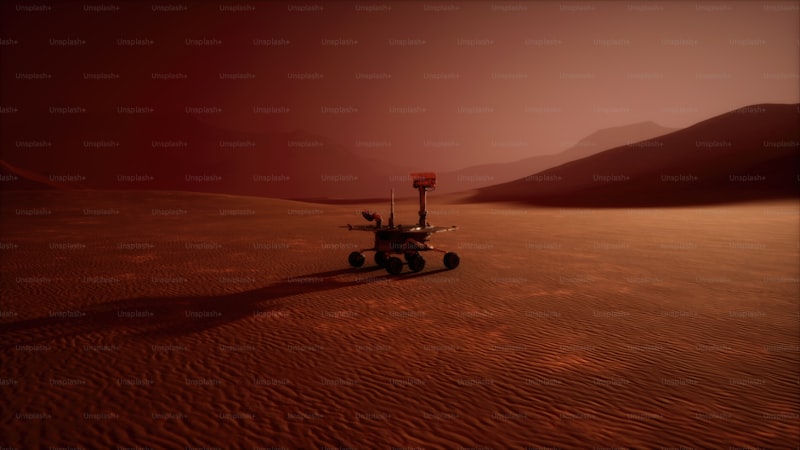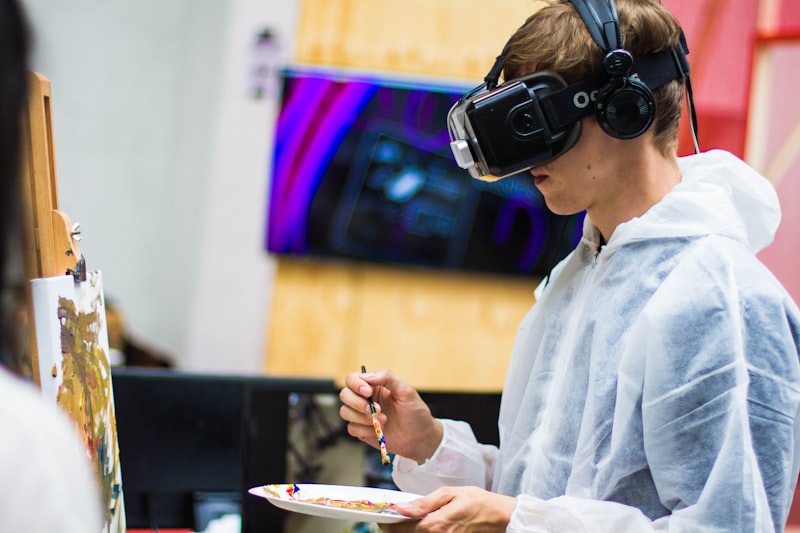In these futuristic narratives, technology isn’t just a tool; it’s a character in itself, shaping the plot and defining the world. Take, for instance, the concept of virtual reality (VR) that allows characters to experience entire lifetimes in mere hours. It’s not just about escapism but exploring the depths of human consciousness and morality.
In Isaac Asimov’s works, advanced robots with complex artificial intelligence raise questions about what it means to be human. These stories delve into ethics and the blurred lines between man and machine, leaving readers pondering the implications long after they’ve closed the book.

Or consider Philip K. Dick’s prophetic visions where society is governed by omnipresent supercomputers. These stories warn of the dangers of unchecked technological advancement while also celebrating the ways it can enhance our lives.

In the realm of space exploration, authors like Arthur C. Clarke paint pictures of colossal starships propelled by exotic matter, traversing galaxies in search of new homes for humanity. Here, the allure of discovery and the unknown fuel both the characters’ journeys and our own imaginations.
What makes these narratives so compelling is their ability to blend the awe-inspiring with the intimately human. They remind us that behind every piece of advanced technology, there are people with dreams, fears, and desires driving its creation and deployment.
Exploring Futuristic Worlds: 5 Sci-Fi Stories Where Advanced Tech Reigns Supreme

Imagine stepping into a world where technology isn’t just advanced—it’s the very essence of existence. In the realm of science fiction, authors have crafted futuristic worlds that push the boundaries of imagination. Let’s delve into five captivating sci-fi stories where advanced technology reigns supreme, each offering a glimpse into possible futures yet unseen.
In Neal Stephenson’s “Snow Crash,” the digital landscape is king. Here, virtual reality and the Metaverse blur the lines between the real and virtual worlds, offering a thrilling adventure where hackers and sword-wielding avatars navigate a dystopian future with equal parts danger and intrigue.
William Gibson’s “Neuromancer” thrusts readers into a world where artificial intelligence and cyberspace dominate. As Case, a washed-up console cowboy, dives deep into the underbelly of a global network, Gibson paints a picture of a future where corporations wield immense power, and hackers dance on the edge of chaos.
For those enthralled by genetic engineering and bio-tech, Margaret Atwood’s “Oryx and Crake” presents a haunting vision of a world reshaped by biotechnology. As geneticist Crake engineers a new breed of humans, Atwood explores themes of morality, identity, and the consequences of playing god with genetic code.
In “The Diamond Age” by Neal Stephenson, nanotechnology takes center stage. Set in a world where nanobots known as “matter compilers” can create anything from food to weapons, Stephenson crafts a narrative where technology’s potential for both creation and destruction is vividly explored.
Lastly, “Altered Carbon” by Richard K. Morgan introduces a future where consciousness can be digitized and transferred between bodies, known as sleeves. In a society where the wealthy can live indefinitely by swapping bodies and the poor struggle to survive, Morgan paints a gritty picture of a future where immortality comes at a steep price.
These sci-fi masterpieces not only entertain but also provoke thought about our own technological trajectory. They challenge us to consider the ethical implications of advanced tech, the potential for both utopia and dystopia, and what it truly means to be human in a world where the line between biology and technology continues to blur.
From AI Overlords to Interstellar Travel: Top Sci-Fi Narratives of Technological Evolution
Exploring the realms of science fiction often leads us into imaginative landscapes where technology reigns supreme, shaping societies and challenging our very existence. From dystopian visions of AI overlords to utopian dreams of interstellar travel, sci-fi narratives have long captivated audiences with their portrayal of technological evolution.

Imagine a future where artificial intelligence surpasses human capabilities, controlling every aspect of life. This theme, popularized in works like “Blade Runner” and “The Matrix”, raises profound questions about the ethical boundaries of technology. These narratives compel us to ponder the consequences of creating entities that may one day outthink us.
On the other end of the spectrum lie tales of humanity’s expansion beyond Earth. Works such as “Interstellar” and “The Expanse” envision a future where advancements in space travel make interplanetary colonization a reality. These stories not only ignite our fascination with the cosmos but also explore the resilience of human spirit in the face of unknown frontiers.
What makes these narratives so compelling is their ability to blend scientific plausibility with human drama. They invite us to contemplate not only the advancements themselves but also their impact on society and individual lives. Could we one day live in a world where AI guides our every decision? Will our descendants journey among the stars, forging new civilizations?
As we delve into these sci-fi epics, we’re reminded that technology is not just a tool but a force that shapes our destiny. It challenges us to consider the ethical dilemmas of progress and the boundless possibilities of the future. Each narrative, whether cautionary or aspirational, leaves us with a sense of wonder about the ever-evolving relationship between humanity and technology.
This article encapsulates the essence of sci-fi narratives, blending imagination with societal reflection on technological advancements, engaging readers with its conversational style and captivating storytelling.
Revolutionizing Reality: Sci-Fi Tales that Predicted Today’s Advanced Technologies
Take, for instance, the concept of virtual reality (VR). Decades before the Oculus Rift and HTC Vive brought VR into our living rooms, authors like Stanley G. Weinbaum and Neal Stephenson were exploring virtual worlds in their stories. Weinbaum’s 1935 short story “Pygmalion’s Spectacles” imagined a pair of goggles that could simulate all senses, transporting the wearer into a fictional realm. Today, VR headsets immerse users in 3D environments, revolutionizing fields from gaming to education and therapy.
Similarly, the idea of artificial intelligence (AI) has been a staple of science fiction since Isaac Asimov’s “I, Robot” stories in the 1940s. Asimov’s laws of robotics—ensuring robots’ ethical behavior—have resonated through the decades, influencing real-world AI ethics discussions. Today, AI powers voice assistants like Siri and Alexa, autonomously navigates vehicles, and assists in medical diagnoses, echoing the predictive powers of sci-fi tales.
Cyberspace, as coined by William Gibson in his seminal novel “Neuromancer,” anticipated the interconnected digital universe we now inhabit. Gibson’s depiction of a sprawling, virtual world where hackers navigate data networks presaged the internet’s evolution. Today, our lives are intertwined with online platforms, social media, and digital commerce, fulfilling Gibson’s cyberpunk vision.
Science fiction continues to inspire and challenge our understanding of technology’s potential. From Star Trek’s communicators predicting today’s smartphones to Minority Report’s gesture-based interfaces prefiguring motion-sensing technology, these narratives provoke thought and drive innovation. As we venture further into the 21st century, the boundary between science fiction and reality continues to blur, making us wonder what other marvels await just beyond the horizon.
Beyond Imagination: Sci-Fi Novels Pushing the Boundaries of Technological Innovation
Imagine a world where artificial intelligence transcends human understanding, where cyberspace becomes a tangible reality, and where genetic engineering reshapes the very fabric of life. These are the landscapes painted by visionary authors who dare to explore what lies beyond the horizon of our current technological capabilities.
In Neal Stephenson’s “Snow Crash,” readers are plunged into a hyperkinetic future where virtual reality and linguistic viruses redefine the boundaries of existence. Stephenson weaves a narrative where the virtual and the real converge, challenging readers to ponder the implications of a fully immersive digital universe.
On a different frontier, William Gibson’s “Neuromancer” introduces us to the concept of cyberspace—a networked world where data flows like a living organism, and hackers navigate its depths like modern-day explorers. Gibson’s prophetic vision laid the groundwork for how we perceive the internet today, blending human consciousness with the digital ether.
In “Dune” by Frank Herbert, technology takes a back seat to the biological. Set on the desert planet of Arrakis, Herbert explores a future where humanity’s survival hinges on control over a mind-altering substance known as spice. This epic saga delves into ecological and sociopolitical themes, using speculative science to mirror our own world’s struggles and ambitions.
Sci-fi isn’t just about predicting the future—it’s about challenging the present. Authors like Isaac Asimov, Arthur C. Clarke, and Philip K. Dick have used their storytelling prowess to ask fundamental questions about ethics, identity, and the nature of reality itself. Through their words, readers are invited to contemplate the implications of scientific progress and its impact on society.
These novels are more than just flights of fancy—they’re blueprints for what could be, cautionary tales of what might await us if we continue on our current path. As technology evolves at an exponential rate, sci-fi remains a vital genre, offering both escapism and introspection in equal measure. So, dive into these worlds of tomorrow, where the only limit is the boundlessness of human imagination.
Frequently Asked Questions
What are some classic examples of sci-fi technologies that became reality?
Explore how sci-fi technologies have influenced reality with classic examples like video calling (from ‘Star Trek’), tablets (from ‘2001: A Space Odyssey’), and voice-controlled AI assistants (from ‘2001: A Space Odyssey’). Discover how these imagined concepts have transformed into everyday technologies.
What are the key elements of sci-fi stories featuring advanced technologies?
Explore the essential components of sci-fi narratives showcasing futuristic technologies, including imaginative worlds, cutting-edge inventions, speculative societies, and the impact of advanced tech on human existence.
How do sci-fi narratives explore ethical dilemmas surrounding advanced technologies?
Explore how sci-fi narratives address ethical dilemmas arising from advanced technologies through speculative scenarios and futuristic settings, probing moral implications and societal impacts.
How do sci-fi authors envision future technologies in their stories?
Discover how sci-fi authors explore future technologies in their narratives, envisioning advanced societies, innovative gadgets, and speculative scientific advancements. Explore the creative ways these writers speculate on potential future scenarios, blending imagination with scientific principles to inspire and provoke thought about the possibilities ahead.
Which sci-fi books prominently feature advanced technological themes?
Discover sci-fi books that explore advanced technological themes, from classics like ‘Neuromancer’ by William Gibson and ‘Snow Crash’ by Neal Stephenson to contemporary works like ‘The Expanse’ series by James S.A. Corey and ‘Ready Player One’ by Ernest Cline.


